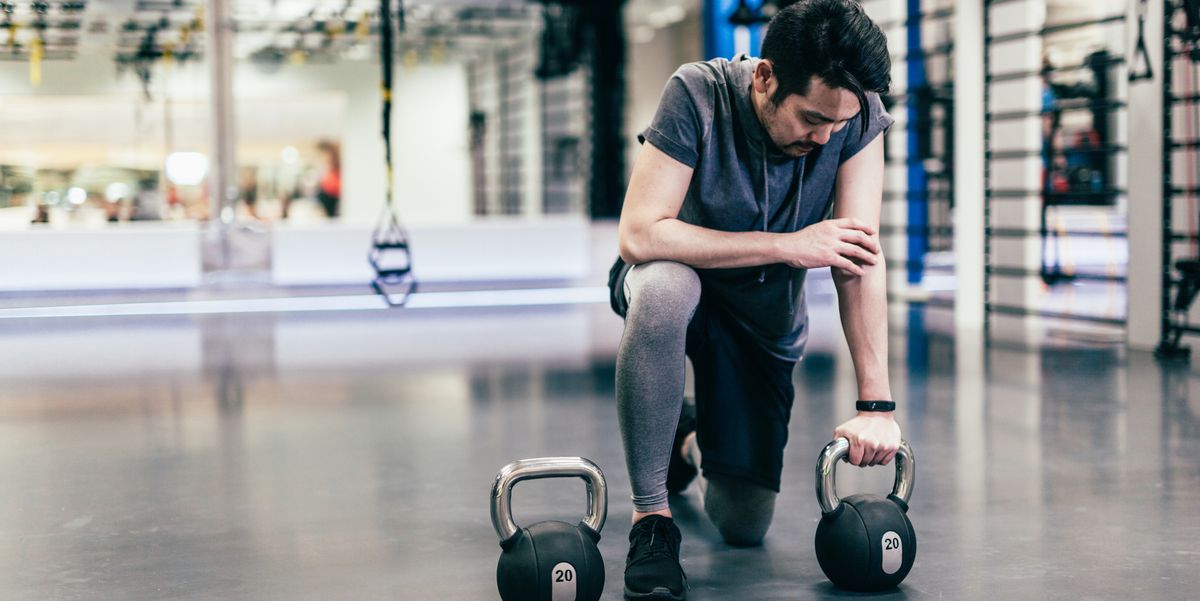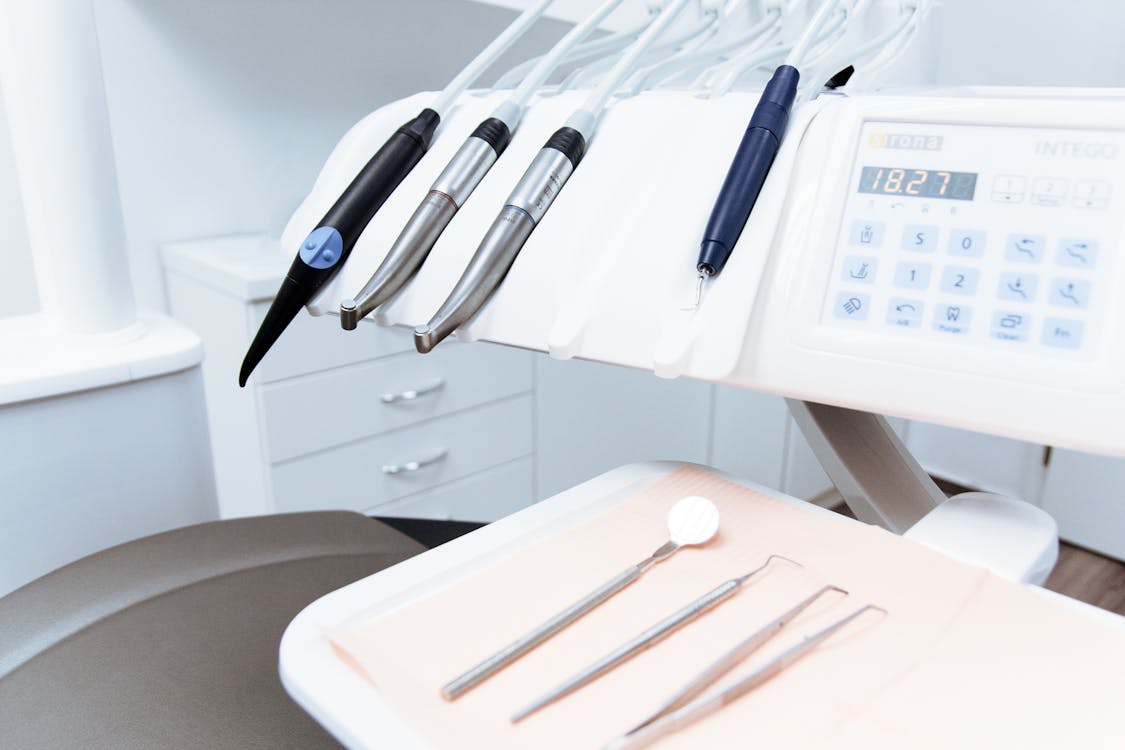The 9 Best Exercises for Your Kettlebell Ab Workout

Table of Contents
If you’re tired of your usual ab workouts and want to mix things up, try adding kettlebell workouts to your routine.
Kettlebells can be the perfect addition to give your abs a new challenge.
Whether you’re a novice or an experienced exerciser, there are many kettlebell ab exercises suitable for different skill levels and needs.
This article provides 8 kettlebell ab exercises and provides useful tips to help you get started.
Before starting, make sure you do a proper 5–10 dynamic warm-up to prepare your body for the exercises ahead.
When you’re ready, pick a kettlebell that you can comfortably lift. In some cases, you may want to use kettlebells of different weights depending on the exercise.
When in doubt, select a lighter kettlebell until you feel comfortable increasing the weight.
1. Standard kettlebell swing
Traditional kettlebell swings rely heavily on a strong core. In particular, they rely on the lower back muscles to help lift the weight while protecting your spine.
Here’s how to do it:
- Stand with your feet slightly wider than shoulder-width apart while holding a kettlebell in both hands (palms facing in) and your arms straight down.
- Inhale and hinge at your hips, slightly bending your knees to bring the kettlebell between your legs. Be sure to keep your spine neutral and engage your core.
- Exhale, contract your glutes, and push your hips forward to lift your body into a standing position. Allow your arms to raise the kettlebell as far as it will naturally go. Usually, this is around shoulder height or parallel to the ground.
- Inhale and swing the kettlebell between your legs by sitting your hips back and slightly bending your knees. This is one rep.
- Perform 10–20 reps of 2–3 sets.

2. Kneeling wood chop
Wood chops are a great way to target the obliques.
- Kneel on your knees with your shins against the ground and torso upright. Hold a kettlebell with both hands around your left hip.
- Keeping your core engaged, lift the kettlebell up diagonally until it’s above your right shoulder. Make sure your hips stay squared and avoid twisting from side to side.
- Then, slowly return the kettlebell back to the starting position. This is one rep.
- Perform 10–12 reps then do the same with the other side. Perform 1–3 sets per side.
3. Kettlebell renegade row
Renegade rows are an excellent core, arm, and back workout. In particular, renegade rows are performed in a plank position, which requires your entire core to stabilize your body.
- Start in a straight-arm plank position with your left hand gripped around the kettlebell. Your right hand should be flat on the floor (if this is too difficult, you can hold another kettlebell or rest your hand on an elevated block). Your core should be engaged and back straight.
- Pull the kettlebell back toward the side of your chest with your left arm, keeping your elbow tucked in close to your body. Avoid rotating your body and keep your hips square to the ground.
- Then, return to the starting position. This is one rep.
- Perform 8–12 reps then switch sides.
4. Windmill
This challenging exercise will help target the stabilizer muscles of your core. It also helps target your shoulders and arms.
- Stand with your feet further than hip-width apart with a kettlebell in your right hand.
- Engage your core and press the kettlebell above your right shoulder with your arm straight and locked. Your biceps should be close to your ear.
- Slightly turn your left foot outwards and shift your right hip back. Then, take your left arm and slowly reach down your left leg until at least your knee or mid-shin. As you do this, look up at the kettlebell.
- Then, slowly lift back up to the starting position.
- Perform 10 reps and then switch sides.

5. Plank pull-through
This full body workout will help target your entire core, arms, upper back, and lower body.
- Start in a straight-arm plank position with the kettlebell placed just behind your left hand.
- Keeping your core engaged, reach for the kettlebell with your right hand and slide it just outside your right side. Try to keep your hips square to the ground.
- Release the kettlebell so that you’re back in a plank position. Then, grab the kettlebell with your left hand and bring it back to the starting position.
- Continue this for 8–12 reps per side.
6. Pull over
This move is a bit more advanced and may require a lighter kettlebell. This exercise relies on strength from your entire core, from start to finish.
- Lay down on your back with your knees bent and feet flat on the floor.
- Using both hands, press the kettlebell above your chest. This is the starting position.
- Keep your arms straight and engage your core. Then, slowly bring the kettlebell back behind you as far as you can without your lower back lifting off the ground or your ribs flaring, arching your mid back.
- Next, slowly lift the kettlebell up and forward to the starting position. Be sure to keep your spine neutral on the floor and abs engaged the entire time.
- Repeat this for 8–12 reps.
7. Single-leg Romanian deadlift
A single-leg Romanian deadlift targets your hamstrings but also requires a strong core to maintain balance and perform the movement successfully. Using a kettlebell is ideal as it’s easy to hold with one hand and the weight will provide an extra challenge.
- Stand with your feet hip-width apart with a kettlebell in your left hand.
- Shift your weight to your right foot and allow a soft bend in the knee.
- Simultaneously, lift your left leg back and hinge at the hips until your torso is parallel to the ground. As you bend, lower the kettlebell towards the ground while keeping it close to your shins. Be sure to engage your core and keep strength in your shoulder stabilizers to resist the pull of gravity.
- Then, begin to lift your torso upwards by squeezing your glutes and engaging your core as you lower your left leg back to the starting position. This is one rep.
- Perform 8–12 reps of 2–3 sets on each leg.
8. Standing side bend
This move mostly targets your obliques, which are the abdominal muscles that run along the sides of your core.
- Stand with your feet hip-width apart, hold a kettlebell in your right hand to your side, and put your left hand on your left hip.
- Engage your core and slowly lower the kettlebell towards the floor. Once it gets to around mid-calf height, slowly return to the starting position.
- Perform 8–15 reps per side.
9. Turkish getup
The Turkish get-up is an advanced move that should only be done by advanced exercisers. To ensure your safety, you may want to try the move without a kettlebell until you are comfortable with the movement pattern. If you do this move without a kettlebell, clench your hand into a fist to mimic holding a kettlebell.
- Lie on your back in a star position (arms and legs out to the sides at around 45-degree angles).
- Bend your right leg so that your right foot is touching the ground a few inches from your butt.
- Holding a kettlebell in your right hand (or without if you’re practicing your form), lift your right arm straight up towards the ceiling. Your fingers should be wrapped around the handle with your knuckles facing outward. Your eyes should be looking at the kettlebell the whole time for safety.
- Next, push into your right foot and allow your weight to shift to your left forearm on the ground.
- Then, push into your left hand and allow your chest to turn slightly towards the left wall. You’ll be in a seated position now.
- Continue to push into your right foot and left hand to lift your body up. At the same time, sweep your left leg backwards and underneath your butt until your knee touches the ground and is aligned with your left hip.
- Do a form check: your right foot should be planted on the floor with your right knee around a 90-degree angle. Your left knee and left hand should be touching the ground and your left arm should be straight. Your right arm should be straight up with the kettlebell.
- Next, shift your weight towards your right foot and rotate your chest back to center and up. At the same time, shift your left foot behind you. You’ll look like you’re in a kneeling position with your right knee at a 90-degree angle. Your whole body should be facing forward.
- Engage your core and press into your right foot to straighten your leg and raise your body to a standing position. Remember to keep your right arm straight in the air with the kettlebell.
- Once you’re in your standing position, you’re now going to return back to the starting position. Remember to do this slowly and safely. It follows the same sequence in reverse.
- Keeping your right arm straight with the kettlebell up above your head, take a step back with your left foot and enter a lunge/kneeling position (your right knee bent 90-degrees and left knee touching the floor).
- Rotate your left foot under your butt so that your left knee is pointed to the left.
- Next, sit your hips back and place your left hand on the ground in front of your left knee. Keep your eyes on the kettlebell.
- Shift your weight to your left hand and sweep your left foot forward to straighten your left leg and allow your left buttock to touch the ground.
- Bend your left elbow and lean into your left forearm.
- Slowly bring your right shoulder back towards the ground. Your right arm should still be straight, holding the kettlebell up above you.
- Take your left hand and place it on the side or handle of the kettlebell. Gently bend your elbows and bring the kettlebell to your right side.
- This is one rep. Perform 2–4 reps per side for a total of 1–3 sets. Remember, this is an advanced move that doesn’t require many reps to feel the burn.
Summary
Kettlebells are a great way to add variety and an extra challenge to your ab workouts.
There are many benefits to kettlebell training that go beyond strengthening your core (
- Full-body workout. Lifting, holding, and moving a kettlebell requires various muscle groups, such as your core, arms, upper back, and lower body.
- Convenient. You can perform kettlebell workouts from anywhere as long as you have a kettlebell available.
- Versatile. You can use kettlebells to perform a variety of movements, meaning you can get in a killer workout with just a single kettlebell.
- Improves your cardio. Kettlebell workouts usually involve multiple muscle groups, which requires a strong heart to pump blood to all the working muscles. Over time, this can improve your cardiorespiratory fitness.
- Great for improving balance and stability. A kettlebell’s center of gravity sits around six inches below the handle, making it harder to control. This unequal distribution weight of a kettlebell requires greater muscle activation to keep your body stable and balanced.
- Increases grip strength. Working with a kettlebell can help improve your grip strength, which is an important indicator of health.
Summary
Training with a kettlebell can help to improve balance, stability, strength, and cardiovascular health.
When deciding on which kettlebell to use, you need to consider your strength and experience.
Though it may be tempting to pick a heavyweight kettlebell, it’s best to start with a lighter kettlebell and focus on achieving good form with each exercise. Once you can easily perform the exercise with proper form, then you can try increasing the weight.
Keep in mind that your core doesn’t need heavy weights to get stronger. Your core helps to stabilize your body and already deals with the load of your body. Therefore, opting for lighter kettlebells for core exercises will be sufficient for most people.
Most people will prefer to use a kettlebell between 5–18 lbs (2.25–8.0 kg). Fortunately, most gyms carry a variety of kettlebell weights for you to choose from.
If you’re working out at home and can only buy one, choose a kettlebell that is on the lighter end and opt for higher reps. Again, the main focus is proper form rather than trying to lift a heavy kettlebell.
Summary
You don’t need a heavy kettlebell when performing ab exercises. Instead, focus on good form and lifting the kettlebell safely and effectively.
Before choosing ab exercises, you’ll first want to decide the goal of your workout.
If you want a full-body workout, you may wish to pick 2–3 ab exercises that use a kettlebell and incorporate them into a larger workout that involves other movement patterns and exercises.
If your goal is to solely work your abs, then you could follow the exercises provided above or design a circuit that includes a few selected exercises.
Fortunately, most kettlebell ab exercises are stabilization exercises, meaning they target most of the core muscles (i.e., transversus abdominis, obliques, rectus abdominis, back extensors) all at once (
Summary
Kettlebell ab exercises can be incorporated into a larger, full-body workout or combined into an abs-only workout.
Here are some helpful tips to get the best results:
- Prioritize good form. Proper form will help ensure you’re targeting the right muscles and prevent injury. This should be your first priority before trying to increase the kettlebell weight.
- Engage your core. To prevent lower back injury and support the movement, keep your core engaged throughout the exercise.
- Make sure you’re using the right weight. Using too heavy of a kettlebell may compromise your form and lead to injury. Stick with lower weights until you’ve mastered your form.
- Don’t forget to breathe. As you perform each exercise, make sure you’re breathing and avoid holding your breath.
- Pick exercises that feel right for you. If any exercise feels uncomfortable or you’re struggling to perform it safely, skip the exercise or make modifications.
Summary
For best results, be sure to engage your core, practice good form, and use a kettlebell that isn’t too heavy.
Kettlebells are a versatile and convenient piece of exercise equipment.
Along with traditional kettlebell swings, you can use kettlebells to get in a killer ab workout.
When picking a kettlebell, choose one that is on the lighter end and focus on mastering your form first. Then, gradually increase the weight or number of reps for an added challenge.
If you’re looking for a good ab workout, try adding kettlebells to your routine.








